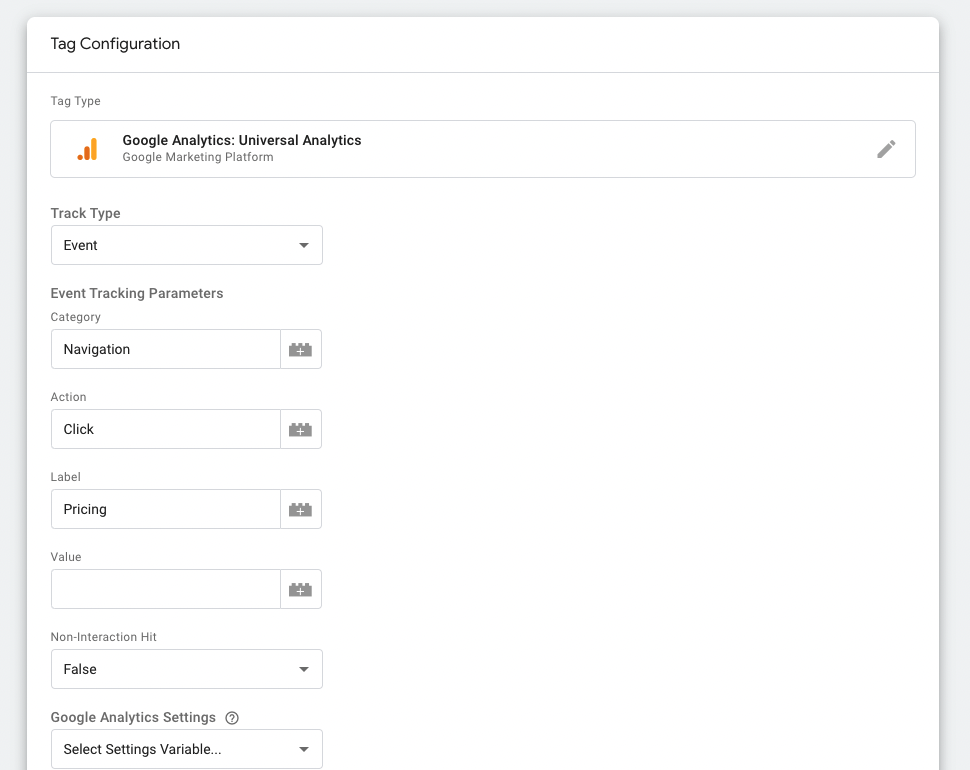What Does Google Analytics Event Tracking Mean?
Google Analytics Event Tracking Can Be Fun For Anyone
Table of ContentsThe Greatest Guide To Google Analytics Event TrackingA Biased View of Google Analytics Event TrackingExcitement About Google Analytics Event TrackingThe Ultimate Guide To Google Analytics Event TrackingIndicators on Google Analytics Event Tracking You Need To KnowThe Of Google Analytics Event Tracking

If you're going to set up event monitoring by hand, after that you're going to have to include some added code to the components you intend to collect data from. The code you're mosting likely to work with will look something such as this: There are 4 components within that code fragment that you're mosting likely to require to define yourself: event, Category, occasion, Activity, occasion, Tag and event, Value.
As you can see, 2 of these are required (classification and activity) while tag and worth are optional. It all depends upon the type of info you want passed on back to Google Analytics when a user clicks on the defined aspect (Google Analytics Event Tracking). It will be a lot simpler to specify these elements if you analyse your web site and make a decision which elements/actions you intend to track
Google Analytics Event Tracking Fundamentals Explained
Now, you'll be asked to define the and and you'll intend to pick from the drop-down menu that shows up when you click. This will raise the very same event monitoring components we considered earlier, which you'll require to fill in. Once you have actually defined these, you can relocate to the 2nd box and choose the trigger that will fire your tag.
On the next screen, you'll additionally have an area for naming your trigger and, if you click the box, you'll see a list of the various triggers you can select. In this case, we wish to select and afterwards pick the option below. You'll establish the trigger to only discharge when an element is clicked with an URL that contains the.
Basic - Occasion tracking! Event tracking offers you a picture of exactly how users engage with your website and service. Review on as we explore every little thing you require to know, including what it is, why you must track events, just how to manage events information, and various other pertinent FAQs you might have.
Little Known Questions About Google Analytics Event Tracking.
You can change between your occasion classifications, actions, and labels in the Leading Events report. This record is critical for digging further right into research on a particular occasion category. The Occasion Pages record presents the web pages where occasions are activated. In this section, we can examine the top web pages that drive events.
It reveals you the course they take as they move from one occasion to the next and aids you to establish which content engages your target market the go to this web-site most. Occasions in Google Analytics have four primary components. They are also a component of the occasion tracking code. Google Analytics uses these codes to track customer communications and team them into occasion records.
Pick "Variables" > "Configure". A list of the specifications you can track right here on your web site is on the right. Under Clicks, Forms, and Video clips, double-check each specification. After checking all required fields, you can click "X" to shut the home window and return to the Overview food selection on the.
Some Known Factual Statements About Google Analytics Event Tracking

If you haven't done so, you might require to establish up a variable in the Google Analytics Setups box. After this, enter your GA tracking ID in the Tracking ID area.
Your ID will certainly get on top of the display. To do this, comply with the following collection of actions: After configuring the areas, select the "Triggering" section. When configuring your brand-new trigger, click the "+" switch, then the "pencil" button, after that choose your trigger type. Label your trigger and define the conditions that cause set off shooting.
About Google Analytics Event Tracking

When it comes to recognizing which sections and elements are guiding clients through your conversion channel, you still will not know. Without event monitoring, GA reports will only count check outs as single-page sessions, even if individuals spend a whole lot of time on one page and involve with it dramatically my latest blog post (and a bounce).
Exactly how does event monitoring accomplish this?Single-web page sessions understood as bounces begin and end on the exact same page. Without event monitoring, GA will certainly classify a user's visit as a bounce if they do not browse to an additional web page, regardless of just how they engage with it. A video-rich web page can have a greater bounce rate if occasions are not tracked.
The 5-Minute Rule for Google Analytics Event Tracking
Nevertheless, for GA to take event hits right into account when measuring bounce rates, you should choose "Non-interaction event" as "False" during the GTM configuration. Setting "occasion objectives" with occasion action is a superb means to keep track of customer tasks you worth extremely, such as brand-new lead entries or clicks on a phone call to activity.